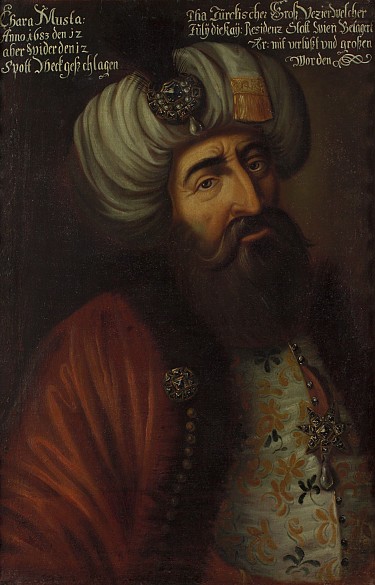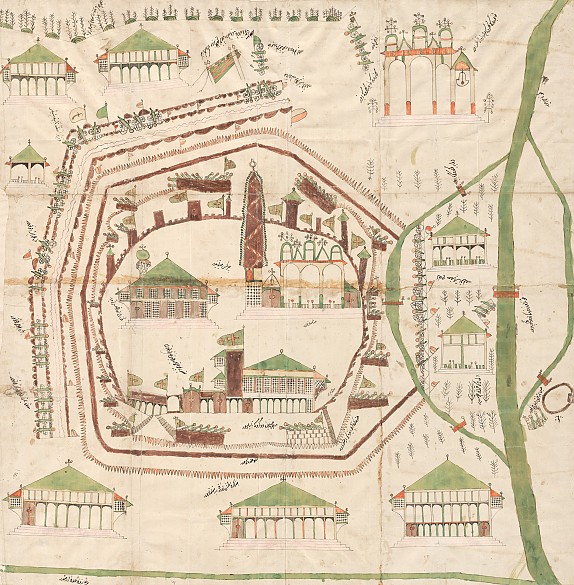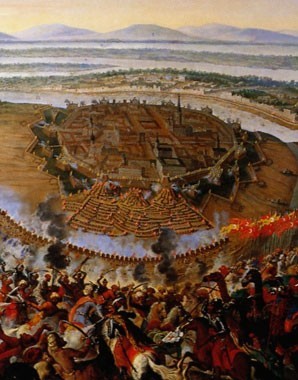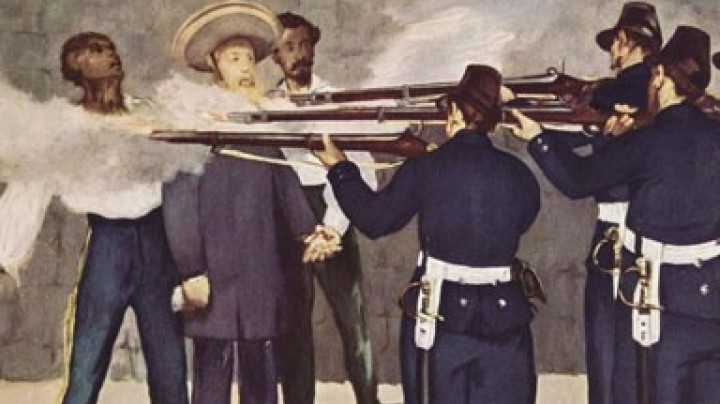‘The Turk’ at the gates of Vienna: Episode 2
In 1683, the Ottomans’ last major campaign ended with Vienna being besieged by a Turkish army for the second time. After this siege, however, it was the Habsburgs’ turn to take the offensive.
Chief Justice Franz Nádasdy in a court document of 1659, criticizing Leopold I’s defensive stance with regard to the OttomansThe one who ought to protect us does not think of us. Indeed he is not willing to hear of or to believe in the danger – perhaps it even gives him cause for rejoicing.
Description of the Habsburg relief army’s assault on 12 September, from the war diary of the Ottoman master of ceremoniesThey are flooding down like black pitch destroying all in its path – with the insidious intention of encircling the Moslem gazi [warriors].
Until the end of the seventeenth century the Habsburgs were on the defensive with regard to the Ottoman Empire. In 1663 there was an escalation of hostilities in Transylvania (Siebenbürgen), leading to the first major Turkish war since the beginning of the century. On 1 August 1664, in the first Habsburg defeat of an Ottoman army under a grand vizier, the imperial general Raimund Montecuccoli won a notable victory at Mogersdorf (now in Burgenland, Austria). However, as Leopold I was at this time also at war with France, he concluded a swift peace with the Turks, much to the displeasure of the Hungarian and Croatian nobility. Feeling that the Emperor had left them in the lurch, they responded with a ‘conspiracy of the magnates’. The rebellion failed and several of its leaders were executed.
Some years later the Ottomans launched a new offensive under the grand vizier Kara Mustafa and advanced as far as Vienna, where they besieged the Habsburg capital and seat of the imperial court as they had done once before in 1529. The summer of 1683 saw a Turkish force of as many as 200,000 men massed before the city, from which Emperor Leopold I and many of Vienna’s inhabitants had fled in July. The commander of the city Count Ernst Rüdiger von Starhemberg defended the fortifications with 11,000 soldiers. By September the Ottoman assaults and widespread disease were making the situation increasingly urgent – the city seemed certain to fall. Succour, however, was nigh: at Tullnerfeld to the west of the city, the imperial army under the command of Duke Charles V of Lorraine joined ranks with troops under the Polish king Jan III Sobieski and further auxiliary forces from member states of the Holy Roman Empire. On 12 September, under the supreme command of Jan Sobieski, the 70,000-strong relief force descended on the Turks from the Kahlenberg to the north of the city. The Ottoman army suffered a crushing defeat and Kara Mustafa fled.
The victory of the imperial army at the Second Siege of Vienna proved to be the turning point in Habsburg-Turkish relations: early in 1684, Pope Innocent XI and Emperor Leopold I allied themselves with Poland and Venice to form the Holy League, which was later also joined by Russia. The Habsburgs now started the offensive which step by step was to conquer the whole of Hungary.


















